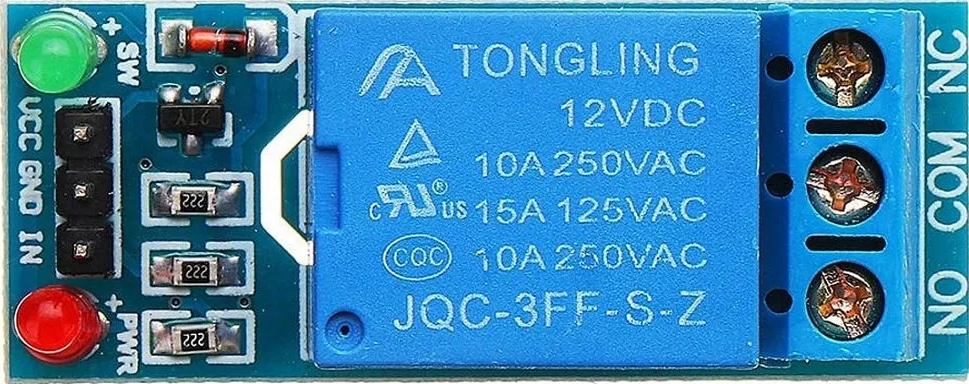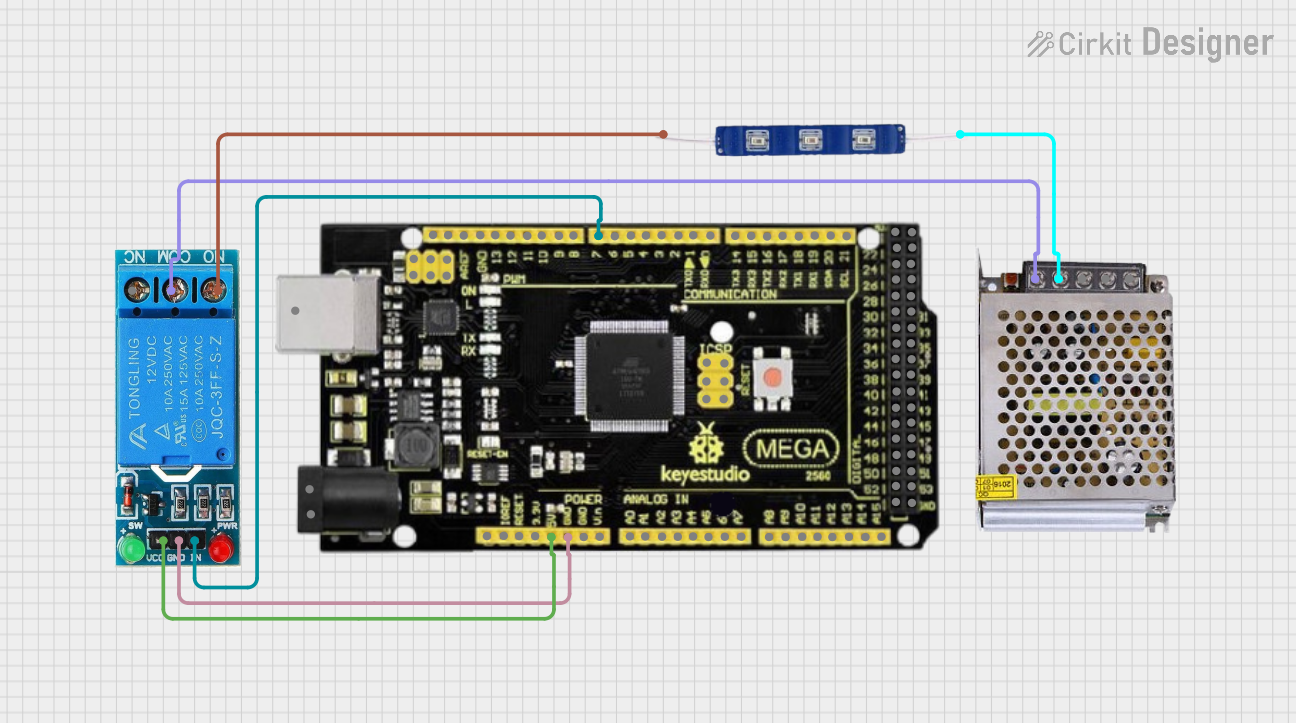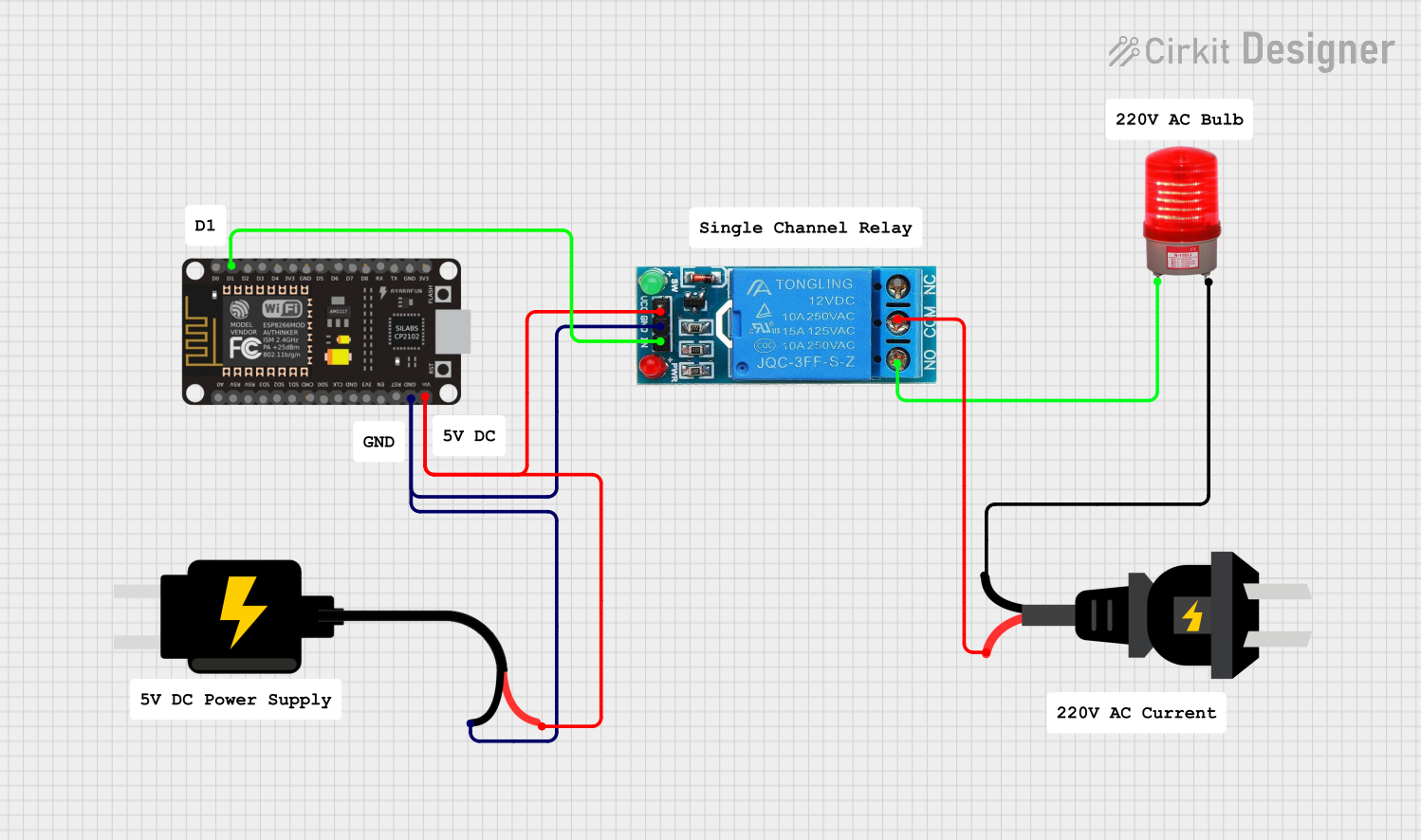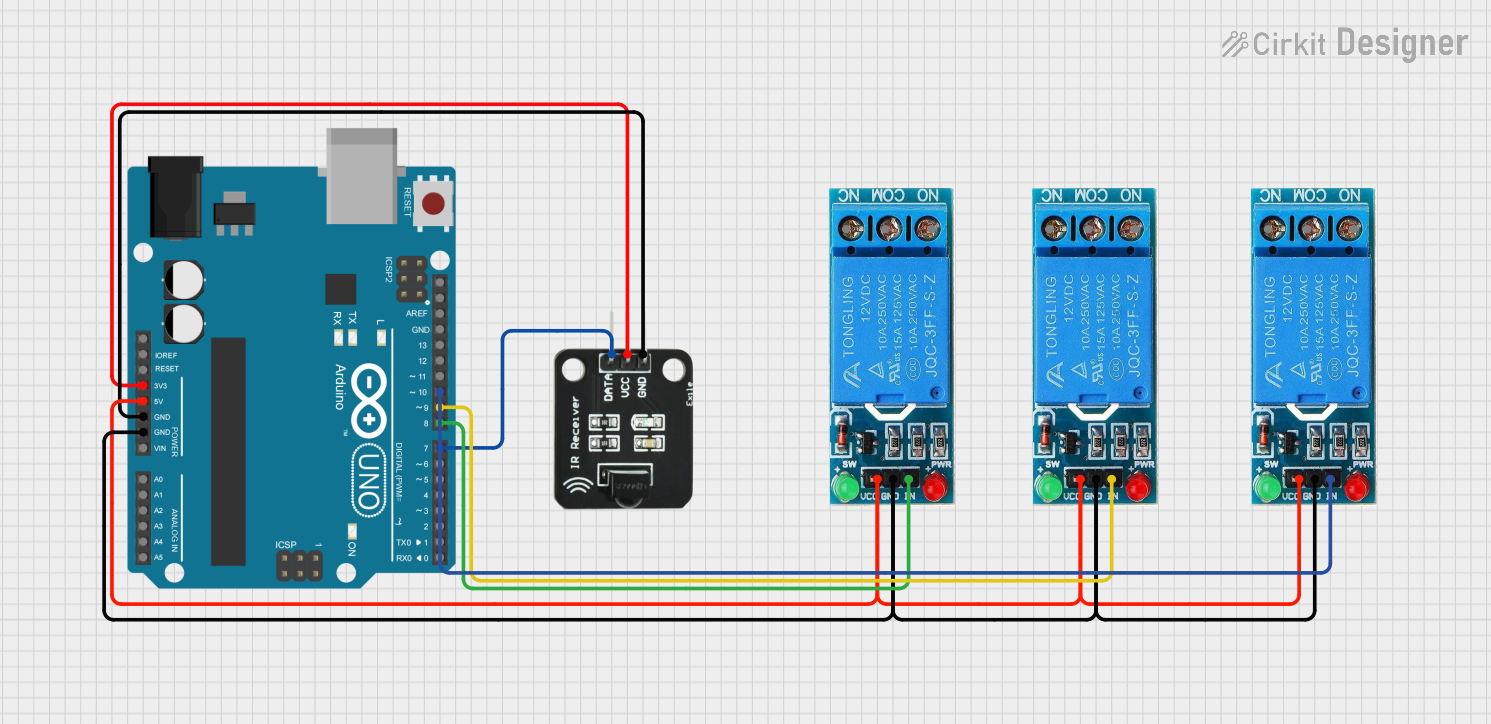
How to Use 12V SINGLE CHANNEL RELAY: Examples, Pinouts, and Specs

 Design with 12V SINGLE CHANNEL RELAY in Cirkit Designer
Design with 12V SINGLE CHANNEL RELAY in Cirkit DesignerIntroduction
A 12V single channel relay is an electromechanical switch that allows you to control a high power device using a low power signal. It acts as a bridge between a control circuit (operating at low voltage) and a load circuit (operating at high voltage). This component is widely used in automation systems, home appliances, and automotive electronics where it is necessary to control devices such as motors, lights, and other high power loads.
Explore Projects Built with 12V SINGLE CHANNEL RELAY

 Open Project in Cirkit Designer
Open Project in Cirkit Designer
 Open Project in Cirkit Designer
Open Project in Cirkit Designer
 Open Project in Cirkit Designer
Open Project in Cirkit Designer
 Open Project in Cirkit Designer
Open Project in Cirkit DesignerExplore Projects Built with 12V SINGLE CHANNEL RELAY

 Open Project in Cirkit Designer
Open Project in Cirkit Designer
 Open Project in Cirkit Designer
Open Project in Cirkit Designer
 Open Project in Cirkit Designer
Open Project in Cirkit Designer
 Open Project in Cirkit Designer
Open Project in Cirkit DesignerCommon Applications and Use Cases
- Home automation (e.g., turning lights on/off)
- Automotive electronics (e.g., starting an engine)
- Industrial controls (e.g., machinery operation)
- Robotics (e.g., actuator control)
Technical Specifications
Key Technical Details
- Operating Voltage (Coil): 12V DC
- Switching Voltage: Up to 250V AC or 30V DC
- Current Rating: Typically 10A
- Contact Type: SPDT (Single Pole Double Throw)
- Control Signal: TTL compatible (5V)
Pin Configuration and Descriptions
| Pin Number | Description | Notes |
|---|---|---|
| 1 | VCC | Connect to 12V power supply |
| 2 | GND | Connect to ground |
| 3 | IN | Control signal input (TTL level) |
| 4 | Normally Closed (NC) | Load connected, active when relay is off |
| 5 | Common (COM) | Connect to load power supply |
| 6 | Normally Open (NO) | Load connected, active when relay is on |
Usage Instructions
How to Use the Component in a Circuit
- Power Supply Connection: Connect the VCC pin to a 12V power supply and the GND pin to the ground.
- Control Signal: Apply a TTL level signal (5V) to the IN pin to activate the relay.
- Load Connection: Connect the load you wish to control to the COM pin and choose either NO or NC pin depending on whether you want the load to be powered when the relay is activated (NO) or when it is not (NC).
Important Considerations and Best Practices
- Ensure that the power supply voltage matches the relay coil voltage (12V).
- Do not exceed the maximum switching voltage and current ratings of the relay.
- Use a flyback diode across the relay coil to prevent back EMF when the relay is turned off.
- If the relay is being driven by a microcontroller, use a transistor to amplify the control signal if necessary.
- Always ensure proper isolation between the control circuit and the high power load circuit for safety.
Example Code for Arduino UNO
// Define the relay control pin
const int relayPin = 7;
void setup() {
// Set the relay pin as an output
pinMode(relayPin, OUTPUT);
}
void loop() {
// Turn on the relay
digitalWrite(relayPin, HIGH);
delay(1000); // Wait for 1 second
// Turn off the relay
digitalWrite(relayPin, LOW);
delay(1000); // Wait for 1 second
}
Troubleshooting and FAQs
Common Issues Users Might Face
- Relay does not activate: Check the power supply and control signal connections.
- Intermittent operation: Ensure that the control signal is stable and that there is no loose wiring.
- Clicking sound but no action: Verify that the load does not exceed the relay's rated capacity.
Solutions and Tips for Troubleshooting
- Double-check all connections, especially the power supply and ground.
- Use a multimeter to verify the presence of the control signal.
- Inspect the relay for any signs of damage or overheating.
FAQs
Q: Can I control this relay with a 5V signal? A: Yes, the control signal is TTL compatible, which means it can be operated with a 5V signal.
Q: What is the purpose of the NC and NO pins? A: The NC pin is connected to the load when the relay is off, and the NO pin is connected when the relay is on. This allows for normally closed or normally open operations.
Q: Can I use this relay with AC loads? A: Yes, the relay can switch AC loads up to 250V, but ensure that you are qualified to work with high voltage AC safely.
Q: How can I protect my microcontroller from the relay's back EMF? A: Use a flyback diode across the relay coil, and consider using a transistor between the microcontroller and the relay if necessary.